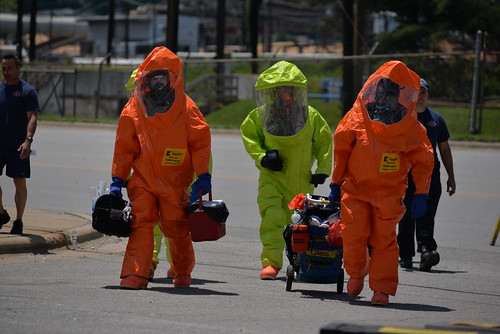On April 23, a six-member majority of the United States Supreme Court issued a decision that narrows the uncertainty about when a discharge of water pollutants to groundwater may require a Clean Water Act (CWA) permit (County of Maui v. Hawaii Wildlife Fund). The decision directly vacates the Ninth Circuit Court of Appeals decision it reviews, and effectively over-rules decisions by the Fourth and Sixth Circuits that differed with the Ninth Circuit but are also inconsistent with the Supreme Court’s new analysis. It also overturns guidance issued by the Environmental Protection Agency (EPA) in 2019 categorically excluding discharges from point sources to groundwater from regulation under the CWA National Pollutant Discharge Elimination System (NPDES) permit program; EPA's policy applied nationwide except in those three judicial circuits.
Read MoreAudit, Compliance and Risk Blog
Jon Elliott
Recent Posts
Supreme Court provides greater clarity about when discharges to groundwater require Clean Water Act permits
Posted by Jon Elliott on Wed, Apr 29, 2020
Tags: Business & Legal, EPA, CWA, Hawaii Wildlife Fund, County of Maui, NPDES, Supreme Court, Groundwater discharge, water pollutants
OSHA issues interim enforcement procedures for COVID-19 cases
Posted by Jon Elliott on Wed, Apr 22, 2020
I wrote recently about guidance from the Occupational Safety and Health Administration (OSHA) and the Centers for Disease Control and Prevention (CDC) to help employers protect their workers against COVID-19 (coronavirus) infection. (see HERE).
Read MoreTags: OSHA, Coronavirus, CDC, Covid-19, Compliance Safety
The 2016 Amendments to the Toxic Substances Control Act (TSCA; the “Frank R. Lautenberg Chemical Safety for the 21st Century Act”) assigned the Environmental Protection Agency (EPA) a variety of new responsibilities and powers to review and regulate chemicals in commerce in the United States. These changes include additional requirements to review chemicals already in use (I summarized this piece of the new TSCA here). Despite all the changes to EPA priorities since 2016 (i.e., during the Trump Administration), EPA has marched forward with these chemical reviews. These reviews include formal statutory requirements to identify separate lists of 20 “high priority” – i.e., potentially high risk – chemicals for accelerated reviews, and 20 “low priority” chemicals EPA considers not to need further review. I wrote about EPA’s 2019 proposals for these lists here.
Read MoreTags: Environmental risks, Environmental, EPA, Hazcom, tsca
EPA responds to coronavirus by offering compliance waivers
Posted by Jon Elliott on Tue, Apr 07, 2020
On March 26, 2020 the Environmental Protection Agency (EPA) issued a temporary enforcement policy, effective retroactively to March 13 and continuing until repealed or revised. The agency cites the overarching need for public health and safety, and anticipates that “the pandemic may affect facility operations and the availability of key staff and contractors and the ability of laboratories to timely analyze samples and provide results.” In particular, EPA references likely personnel shortages, and proliferating travel and social distancing restrictions. Accordingly, EPA’s new policy sets out conditions under which an entity can reduce or suspend its compliance activities, including monitoring and reporting, for the duration of a period during which “compliance is not reasonably practicable.”
Because the new policy does not provide useful thresholds or criteria for coronavirus-induced impracticality, there’s no realistic way to anticipate its impacts. Regulated entities and their organizations have generally expressed appreciation, while environmental and other organizations that distrust the contemporary EPA have generally expressed outrage. The remainder of this note will summarize the scope and organization of the new policy, leaving the reader to judge how it may be implemented.
Read MoreTags: Coronavirus, Protecting employees, Safety and Health at Work, Pandemic
North American employers are required to verify new employees’ identities and eligibility to work in the country. In the United States, employers’ inquiries must confirm eligibility to work in the U.S. when an employee is actually being hired (not just applying), using Form I-9 (Employment Eligibility Verification), which is issued and administered by the U.S. Citizenship and Immigration Services (USCIS) unit of the federal Department of Homeland Security (DHS). USCIS has revised the I-9 form – the new form is dated October 21, 2019 but was only formally published on January 31, 2020. The new version includes minor changes from the preceding one (which was dated July 17, 2017 and set to expire August 31, 2019 but subject to extended viability by USCIS pending approval of the newest version).
Read MoreTags: Business & Legal, Employer Best Practices, Health & Safety, Employee Rights
Protecting employees against coronavirus at operating workplaces
Posted by Jon Elliott on Wed, Mar 25, 2020
How can employers protect workers against coronavirus exposures? In expanding parts of the country, most employers do so by complying with applicable Shelter in Place orders. Workplaces still in operation face more complicated occupational health situations.
The Occupational Safety and Health Administration (OSHA) and the Centers for Disease Control and Prevention (CDC; directly and through its subsidiary National Institute for Occupational Safety and Health (NIOSH)) and other occupational health agencies issue guidelines for workplace safety, which can be used in locations that are still open. (This approach is typical; I wrote about their Zika Virus guidelines HERE). In addition, the Equal Employment Opportunity Commission (EEOC) provides interpretive guidance on how to apply disabilities and anti-discrimination laws to the design and implementation of protective programs.
Read MoreTags: OSHA, EEOC, Coronavirus, Protecting employees, CDC, Safety and Health at Work, Pandemic
EPA and the Corps of Engineers Finish Redefining “Waters of the United States”
Posted by Jon Elliott on Wed, Mar 18, 2020
On January 23, 2020 the Environmental Protection Agency (EPA) and the U.S. Army Corps of Engineers (Corps) finalized revisions to narrow their joint regulatory definitions of “waters of the United States”, applying authority under the Clean Water Act (CWA). The agencies characterize this narrowing as an increase in certainty for stakeholders, accomplished by eliminating some of the site-specific discretion that the 2015 rules provided to permit writers.
This marks the latest step in a cycle of rulemakings that began during the Obama administration in 2015, when the same agencies adopted revisions to the same rules expanding their definitions in order to interpret and apply then-recent decisions by the US Supreme Court.
Read MoreTags: Business & Legal, Environmental risks, Environmental, EPA, clean water
Chemical Safety Board Finalizes Chemical Incident Reporting Rule
Posted by Jon Elliott on Fri, Feb 28, 2020
The federal Chemical Safety and Hazard Investigation Board – which usually refers to itself as the Chemical Safety Board or CSB –conducts independent investigations of major chemical accidents, issues accident-specific findings, and offers specific or general recommendations for improved chemical handling and regulation (I wrote about one set of proposals here). For the thirty years since its authorization in the 1990 Clean Air Act (CAA) Amendments, CSB was also directed to establish chemical accident reporting regulations, but instead relied on forwarded reports from the National Response Center (NRC) and Occupational Safety and Health Administration (OSHA), and on media reports of chemical releases, as the starting point for determining when and how to investigate.
Read MoreTrump Administration Proposes to “Modernize” Federal Environmental Impact Assessments by Narrowing Them
Posted by Jon Elliott on Tue, Feb 25, 2020
The federal Council on Environmental Quality (CEQ) has proposed to revise its regulations administering the National Environmental Policy Act (NEPA) of 1969. NEPA requires federal agencies to assess the environmental effects of their proposed actions, and incorporate this information into their decisions. Government-wide guidance is provided by the White House’s CEQ, established by NEPA and appointed by the President. CEQ issues formal regulations that agencies must follow, and guidance documents that provide additional advice. CEQ also reviews agencies’ NEPA implementation programs, and publishes annual national Environmental Quality Reports.
Read MoreTags: Business & Legal, Environmental risks, Environmental, EHS, EPA, clean water, site auditing, greenhouse
On February 10, the Trump Administration issued its budget proposal for federal Fiscal Year (FY) 2021 (October 1, 2020 through September 30, 2021), entitled “A Budget for America’s Future.” The drastic changes in budgeting for environmental health and safety (EH&S) regulation are consistent with previous proposals from this administration. They have no chance of adoption, particularly given the Democrats’ control of the House of Representatives, but still represent a fair summary of the President’s continuing priorities.
Read MoreTags: Business & Legal, Environmental risks, Environmental, EPA










